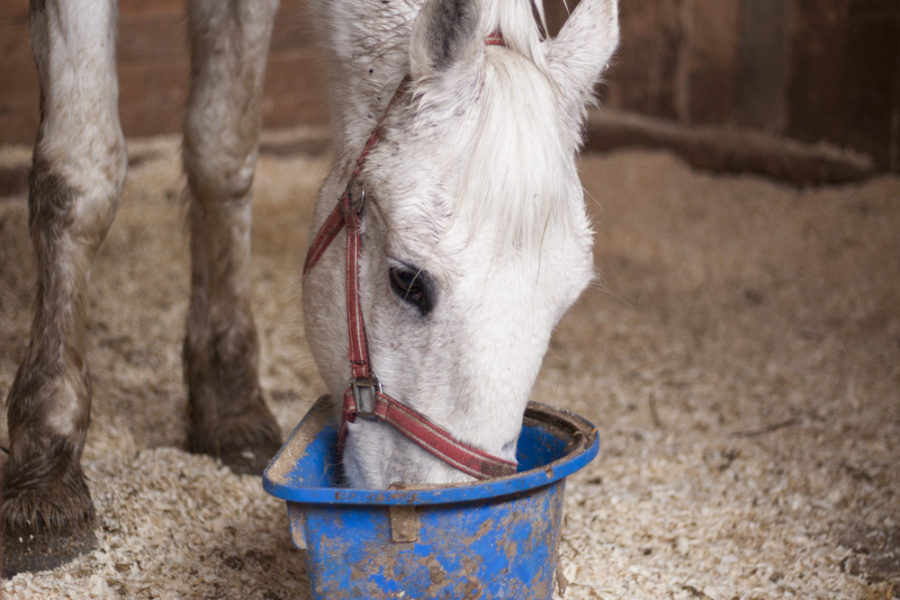According to new research, bran mashes might not be as healthy for your horse as you might think. Here’s why!
Bran mash used to be widely used among horse caretakers. This high-fiber feed was thought to be good for horses’ digestion, and to help keep them energized and healthy, as well as warm during the winter months. Yet recently it has fallen out of favor. Why is this? New research has discovered that bran mash isn’t as healthy for horses as once was thought.
Does it really provide warmth?
It was thought that feeding bran mash helped keep horses warm in the bitter cold – but this is untrue. It has been found that more body heat is produced by eating and digesting hay and other roughages than by consuming bran mash. Feeding the right amount of quality forage is the best way to keep your equine companion warm.
Nutritional value
Wheat bran contains B vitamins like niacin and thiamine, as well as riboflavin, but offers little else in the way of nutrition. Even as a fiber supplement, it only has about 10–12% fiber which is considerably less than other sources such as beets, which have 20%, and grass hay which is anywhere between 28–34% fiber.
Bran mash’s macromineral content is also problematic to a horse’s health. Wheat bran contains an incredibly high amount of phosphorous and not a lot of calcium. This is not good for a young horse’s development. If fed often enough, the imbalance in wheat bran may cause skeletal problems in horses. Researchers also found that diets containing a lot of wheat bran increased the risk of developing secondary hyperparathyroidism. This condition was caused by a lack of calcium, possibly from diets where there was too much phosphorus consumed. “Big head” or “bran disease” was far more abundant when horse caretakers fed traditional grains and wheat bran more commonly than we do today.
Digestion
It was originally thought that bran mash had a mild laxative effect on horses, and therefore should be given once a week to help keep the digestive tract of the horse moving. However, this is completely backward for several reasons.
A study conducted at Cornell University completely debunked this notion. Wheat bran mash was found to have no notable effect on the moisture content of stool. It didn’t matter if it was dry or wet. Even when the mash was mostly water, the water content of the stool only rose by 3%! What was happening? Researchers believe that the digestive enzymes were being disrupted and it caused subsequent, though mild, digestive upset. The digestive enzymes, the amount secreted as well as the bacteria in the horse’s hind gut, are somewhat specific to the diet being fed. When you change a horse’s feed it must be done over a long period, yet this practice seems to completely fall by the wayside when it comes giving a horse bran mash once a week. Randomly integrating bran mashes into a horse’s diet will have a negative impact on their digestion.
It’s also important to note that some scientists believe bran mashes may harm the gastrointestinal tract’s resident population of fiber-fermenting microbes.
The upside of bran mash
It’s important to note that feeding bran mashes to horses once in while is not likely to cause any health concerns. It’s more likely to occur if bran or traditional grains are fed daily in poorly balanced ratios. Feeding bran mashes to young horses should be avoided. They should make up less than 10% of an adult horse’s diet, and should only be fed to a horse once a week at most.
Horses like the taste of bran mash and if they are ill and off their food — a small amount will usually tempt them into eating. Also, it’s good to give after strenuous exercise as it can help prevent dehydration.
Bran mashes have little place in modern horse diets. There has been a lot of research which disproves the health benefits associated with bran mashes – so feed with caution!








